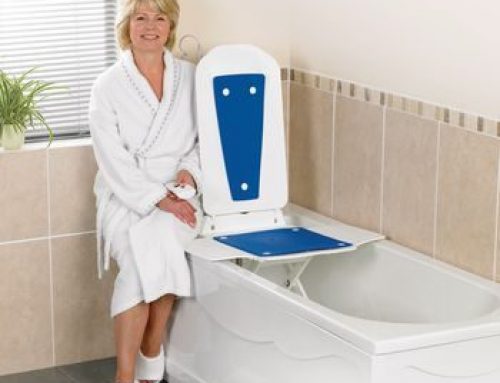
When comparing the costs of aging at home versus in a nursing home, many people forget to factor in government benefit programs. Medicare does not presently cover stair lifts or bathtub lifts such as those sold at Home Access Products, because they do not consider stair lifts or bath tub lifts “a medical necessity.” However, there are other programs available to help lessen your financial burden in other areas. With the help of a few simple websites, you can see if you qualify for any such programs and how the programs can help you age comfortably in your own home.
Benefits CheckUp has helped almost four million people find over $14 billion worth of benefits. This website helps seniors find programs that help pay for food, medicine, and more. The website’s form can be filled out by seniors or adult children and asks questions about any current benefits, veteran status, chronic conditions, housing, income, and more to help users find programs that they may be eligible for. The questionnaire gives instructions for each step and offers clarification on questions that may confuse users, making it easy for seniors to fill out on their own or with their adult children.
Benefits.gov features over 1,000 benefits programs from 17 Federal partners. The site divides its questionnaire into Core, General, Household, Education, Health, Income & Assistance, and Work Experience. While this site is not focused on only seniors, it still offers a comprehensive list of benefit programs that the user may be eligible for. The first question, in fact, asks users to check the specific types of benefits they are looking for; seniors interested in aging at home may wish to check Disability Assistance, Food/Nutrition, Healthcare, Housing, Insurance, Living Assistance, Medicaid/Medicare, Military: Active Duty and Veterans, and/or Social Security/Retirement, depending on each user’s unique situation.
In addition to these websites, seniors may wish to explore local churches, charities, or other private organizations for financial assistance. The Veterans Affairs office is a helpful resource for veterans, and the state’s Department of Human Services office is set up to help those who have limited funds. The Illinois Department of Human Services, for example, offers many Private and Government Home Modification Resources as part of their Home Modification and Assistive Technology services. Also, any township office will typically have funding available for helping citizens pay for aging at home technology. Finally, local Senior Services programs oversee a variety of programs that will help address the needs and health requirements of local senior citizens.
In addition to state- and federally-run programs, you can fund your aging at home technology by charging the stair lift or bathtub lift to a credit card and paying it off in monthly installments, or by having your family contribute to the cost. The money you’ll save in the long run by not being in a nursing home makes your aging at home technology a solid investment.
Cost should never prohibit you from aging at home, but with a little searching, you can find an abundance of available resources to help you continue living in the comfort of your own homes.


Leave A Comment
You must be logged in to post a comment.